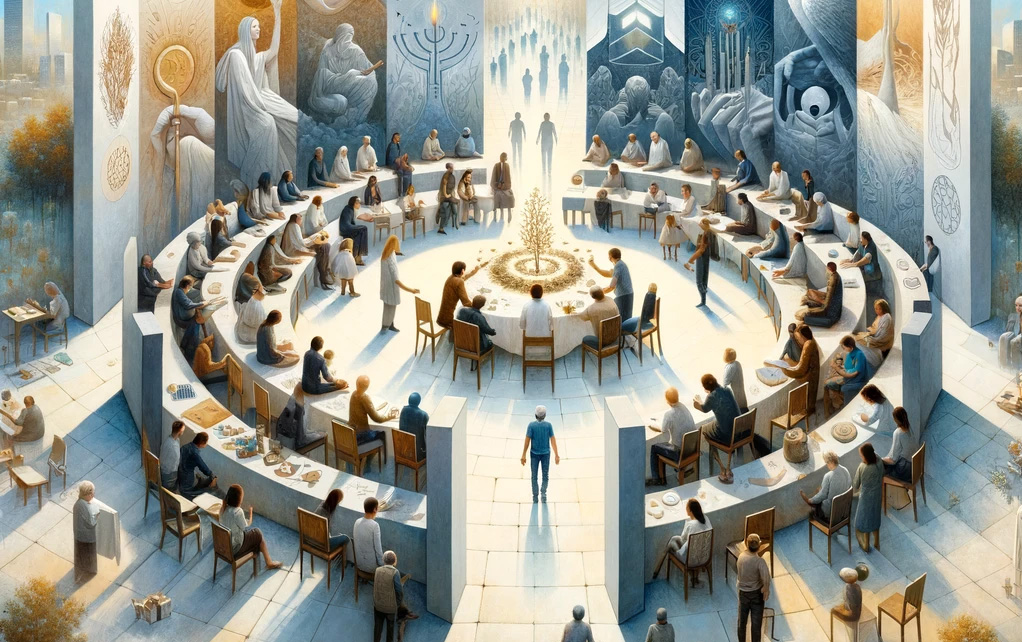Chapter: Friedensmal of Change / Building Bridges
Over 26 years since the project began in 1998, it became apparent that a direct approach was ineffective as the trauma had created structures that obstruct healing. Through a creative process, the Friedensmal has evolved into a symbol of universal spirituality. The approach has been expanded as the 'Friedensmal of Change', aiming to recognize trauma recovery within a broader international and interreligious context as a global mission—not merely focused on German-Jewish relations, but relevant to all humanity.
The name 'Yerushalayim' (Jerusalem) on the 'Stone of Encounter' points to its roots in the Christian-Jewish tradition. Learn more about the significance of the name Jerusalem in the chapter 'Yerushalayim.' Recognizing one's heritage is vital to finding strength in those roots, allowing individuals or nations to grow into the light anew. By accommodating various religions and worldviews, the Friedensmal facilitates a profound understanding and comprehensive reckoning with the past in the spirit of necessary collective shadow work that transcends individual cultural or religious boundaries. It thus becomes a symbol of universal reconciliation and healing.
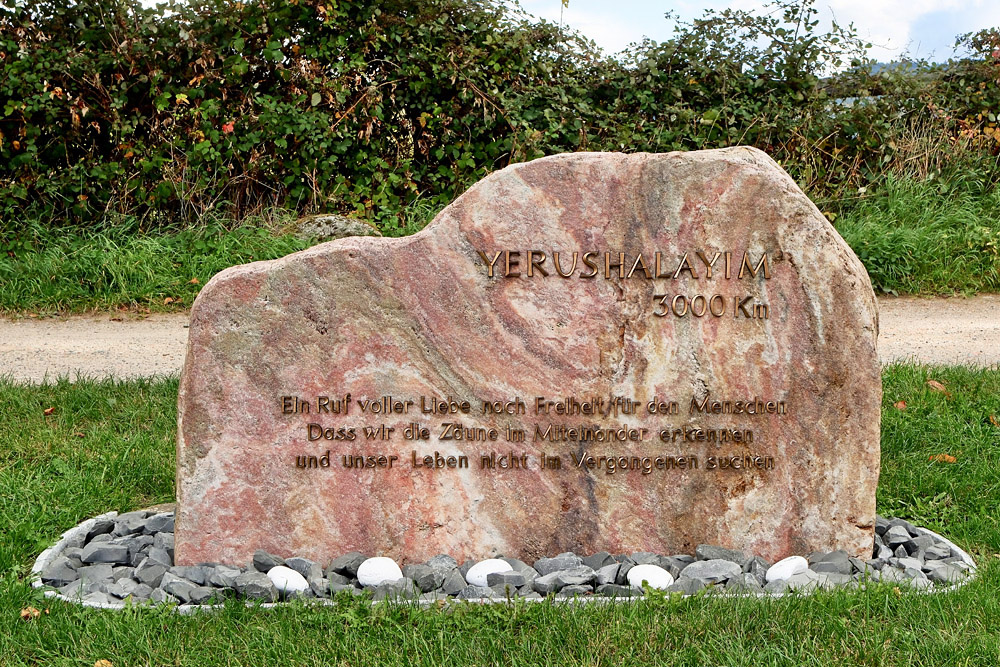
The conflict in Gaza posed an additional challenge, as the Friedensmal had been inaugurated within the framework of '50 years of relations between Germany and Israel.' Originally conceived as a space for reflection and reconciliation, the monument increasingly found itself in a politically charged context due to the reasons described, which limited its reach and impact among the general populace. This situation and the limited support from political entities and organizations led to the decision to redefine the Friedensmal as 'free art for peace,' independent of specific groups, religions, and nations.
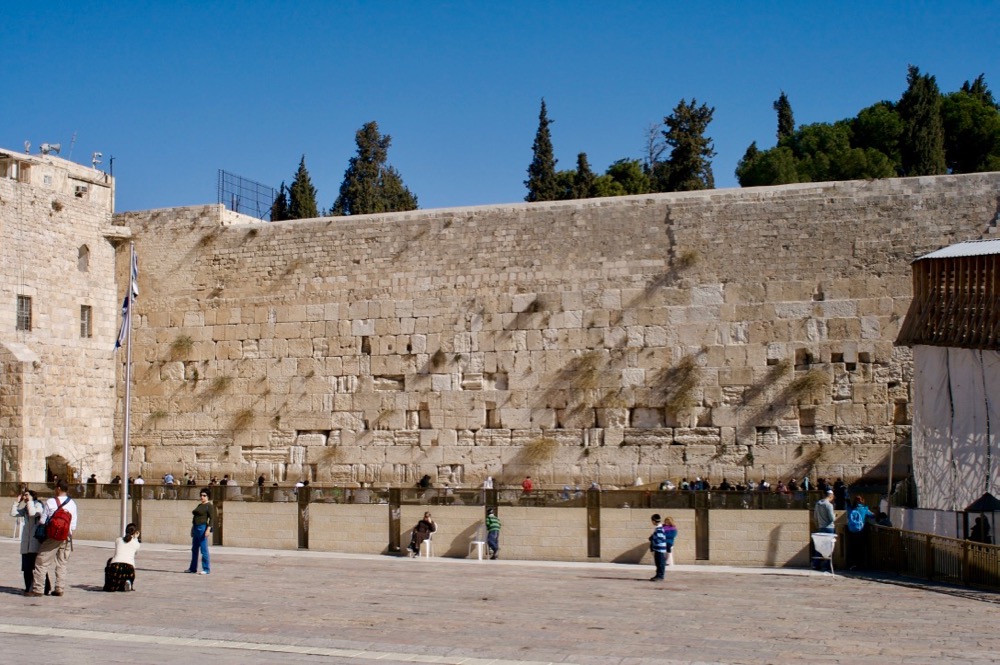
The roots of the Friedensmal reach deep into the Judeo-Christian tradition and the turbulent history of the region. A significant reference point is the location of a former satellite camp of the Natzweiler-Struthof concentration camp near the monument. This place reminds us not to forget the past and to commit ourselves to reconciliation and peace. The naming 'Jerusalem Friedensmal' also gained additional significance through the discovery of the historical "Jerusalem on the Rhine" in the cities of Worms, Speyer, and Mainz. These cities, known as the birthplaces of Ashkenazi Jewish culture in the High Middle Ages, were called "SchUM cities." From the Friedensmal, one can see the silhouette of Worms with its distinctive cathedral—a silent witness to the often violent history of the Jewish communities on the Rhine.
The connection to 'Jerusalem on the Rhine' is now shaped through the "(Jerusalem) Stone of Encounter," which recalls this history. Both Christianity and Judaism trace back to the same origins in the teachings and scriptures of the Old Testament. Many moral principles and wisdoms from these common roots have shaped Western culture over centuries. Despite all conflicts and persecutions, there have been phases of peaceful coexistence and mutual cultural exchange between Jews and Christians, especially in the SchUM cities on the Rhine.
By reflecting on the diversely branched roots—the centuries-old tradition of Judaism in the region, which was threatened by severe pogroms and expulsions by parts of the Christian population as early as the 11th century, the horrors of the Nazi genocide of Jews, but also the periods of peaceful coexistence and cultural exchange between Jews and Christians in the so-called "SchUM cities" on the Rhine—we are reminded of the shared spiritual roots in the teachings of the Old Testament.
This complex history, marked by light and shadow, suffering and reconciliation, motivates us to strive resolutely for a more peaceful, humane future in which the dignity of all people is respected.
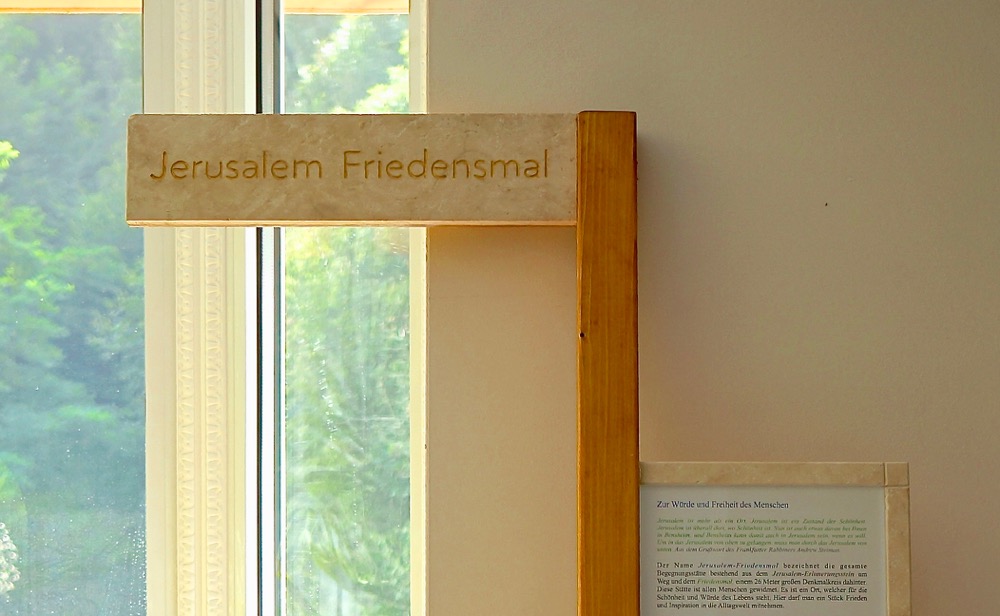
With the 'Blossom of Life' at its center as a metaphorical bridge between diverse spiritual and cultural traditions, the Friedensmal represents a path to healing and universal reconciliation. It stands for the collective quest for a deeper understanding of humanity and a harmonious future, beyond prejudices and projections.
The Friedensmal opens doors on the 'Path Within' to spiritual and philosophical paths with the same goal: a deeper understanding of our humanity and the pursuit of a peaceful world. It invites us to expand our horizons and recognize ourselves in others, to gain deeper insights into our being. Each tradition contributes to collective wisdom and shared growth, while the Judeo-Christian heritage remains the central starting point of the monument's development.
Thus, the Friedensmal is not only a place of remembrance but also, in remembering 'the idea of Jerusalem,' a symbol of hope. It invites us not to dwell in the heaviness of history but to realize that the task lies in clarifying, changing, growing, and turning towards life with individual and collective responsibility.
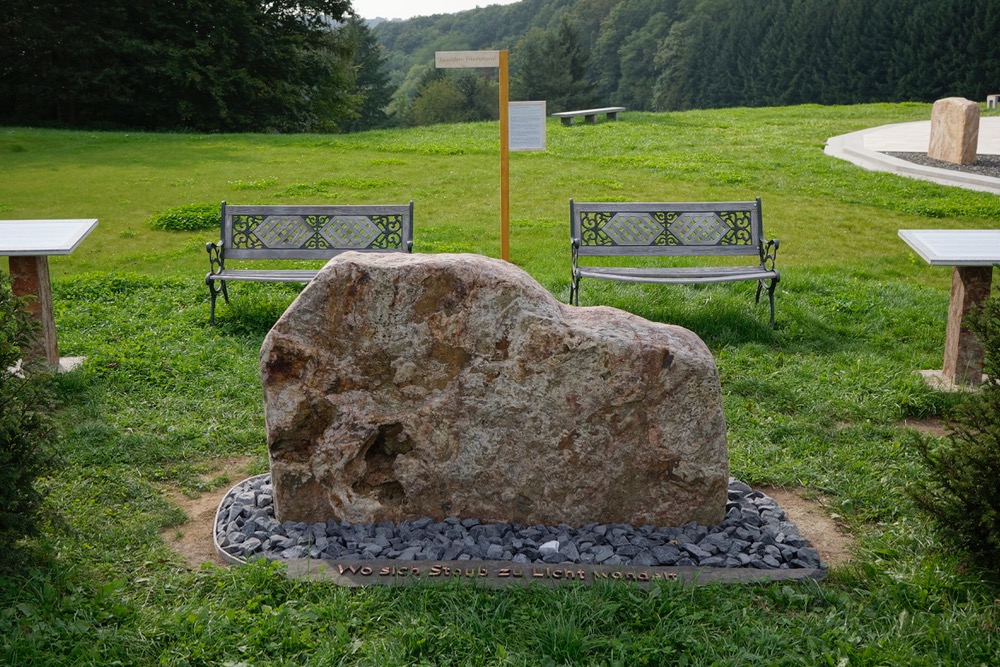
.
Continue the journey in the 'Friedensmal' chapter:
Philosophy - Discover the deep philosophy behind the Friedensmal: A path to reconciliation and spiritual unity, shaped by dialogue and inspiring art for peace.
'we'-Networking - We are creating a decentralized network of communities around the idea of peace and freedom, expressed through the Friedensmal.
From Local Roots to a Universal Message
The
Friedensmal represents a significant evolution: inaugurated in 2013 as the 'Jerusalem Friedensmal' with a focus on German-Jewish relations in Jerusalem. These historically burdened relationships continue to exert a profound influence on people and politics in Germany today. Thus, it is of paramount importance to address the associated traumas, to prevent 'a repetition of the past in a different guise'.Over 26 years since the project began in 1998, it became apparent that a direct approach was ineffective as the trauma had created structures that obstruct healing. Through a creative process, the Friedensmal has evolved into a symbol of universal spirituality. The approach has been expanded as the 'Friedensmal of Change', aiming to recognize trauma recovery within a broader international and interreligious context as a global mission—not merely focused on German-Jewish relations, but relevant to all humanity.
The name 'Yerushalayim' (Jerusalem) on the 'Stone of Encounter' points to its roots in the Christian-Jewish tradition. Learn more about the significance of the name Jerusalem in the chapter 'Yerushalayim.' Recognizing one's heritage is vital to finding strength in those roots, allowing individuals or nations to grow into the light anew. By accommodating various religions and worldviews, the Friedensmal facilitates a profound understanding and comprehensive reckoning with the past in the spirit of necessary collective shadow work that transcends individual cultural or religious boundaries. It thus becomes a symbol of universal reconciliation and healing.

Chalenges and Experiences
The evolution of the
Friedensmal was marked by challenges that necessitated an expansion of the concept in March 2024. Collaborating with organizations in the field of 'memory culture' proved challenging. Despite efforts, I often encountered reticence, revealing the sensitivity of historical burdens. A central obstacle was dealing with Germany's Nazi past. The politicization of history, often framed as a 'battle against the right,' complicated open dialogue. This impaired the ability to learn from history and shape the future. The practice of hastily branding opponents as 'Nazis' or 'anti-Semites' undermined constructive exchange. This led to misunderstandings about the objectives of the Friedensmal and influenced its role as a neutral space for dialogue.The conflict in Gaza posed an additional challenge, as the Friedensmal had been inaugurated within the framework of '50 years of relations between Germany and Israel.' Originally conceived as a space for reflection and reconciliation, the monument increasingly found itself in a politically charged context due to the reasons described, which limited its reach and impact among the general populace. This situation and the limited support from political entities and organizations led to the decision to redefine the Friedensmal as 'free art for peace,' independent of specific groups, religions, and nations.

Reflection on the roots
The vision of the '
Jerusalem Friedensmal,' which has long animated this project, remains an essential part of my work. Despite the evolutionary development of the monument-project and the changed world in which we live, it is important to me to honor this original idea: At the edge of the forest, a place of reflection emerges - the 'Realm of Dreams.' Here, the sign 'Jerusalem Friedensmal' will be reinstalled as a symbol that inspiration and hope for peace must find their place. This site shall warn us against illusions of power and keep our dreams of peace alive.The roots of the Friedensmal reach deep into the Judeo-Christian tradition and the turbulent history of the region. A significant reference point is the location of a former satellite camp of the Natzweiler-Struthof concentration camp near the monument. This place reminds us not to forget the past and to commit ourselves to reconciliation and peace. The naming 'Jerusalem Friedensmal' also gained additional significance through the discovery of the historical "Jerusalem on the Rhine" in the cities of Worms, Speyer, and Mainz. These cities, known as the birthplaces of Ashkenazi Jewish culture in the High Middle Ages, were called "SchUM cities." From the Friedensmal, one can see the silhouette of Worms with its distinctive cathedral—a silent witness to the often violent history of the Jewish communities on the Rhine.
The connection to 'Jerusalem on the Rhine' is now shaped through the "(Jerusalem) Stone of Encounter," which recalls this history. Both Christianity and Judaism trace back to the same origins in the teachings and scriptures of the Old Testament. Many moral principles and wisdoms from these common roots have shaped Western culture over centuries. Despite all conflicts and persecutions, there have been phases of peaceful coexistence and mutual cultural exchange between Jews and Christians, especially in the SchUM cities on the Rhine.
By reflecting on the diversely branched roots—the centuries-old tradition of Judaism in the region, which was threatened by severe pogroms and expulsions by parts of the Christian population as early as the 11th century, the horrors of the Nazi genocide of Jews, but also the periods of peaceful coexistence and cultural exchange between Jews and Christians in the so-called "SchUM cities" on the Rhine—we are reminded of the shared spiritual roots in the teachings of the Old Testament.
This complex history, marked by light and shadow, suffering and reconciliation, motivates us to strive resolutely for a more peaceful, humane future in which the dignity of all people is respected.

Building Bridges to a Common Center
The
Friedensmal symbolizes humanity's endless journey in search of peace, understanding, and spiritual unity. Inspired by Socrates' worldview that 'I know that I do not know,' it underscores the importance of openness and intellectual humility.With the 'Blossom of Life' at its center as a metaphorical bridge between diverse spiritual and cultural traditions, the Friedensmal represents a path to healing and universal reconciliation. It stands for the collective quest for a deeper understanding of humanity and a harmonious future, beyond prejudices and projections.
The Friedensmal opens doors on the 'Path Within' to spiritual and philosophical paths with the same goal: a deeper understanding of our humanity and the pursuit of a peaceful world. It invites us to expand our horizons and recognize ourselves in others, to gain deeper insights into our being. Each tradition contributes to collective wisdom and shared growth, while the Judeo-Christian heritage remains the central starting point of the monument's development.
Thus, the Friedensmal is not only a place of remembrance but also, in remembering 'the idea of Jerusalem,' a symbol of hope. It invites us not to dwell in the heaviness of history but to realize that the task lies in clarifying, changing, growing, and turning towards life with individual and collective responsibility.

.
Hope and Outlook
The evolution symbolizes the hope for dialogue between cultures, worldviews, and religions. The goal is to establish the
Friedensmal as a place of exchange and inspiration, where people can come together peacefully. It aims to demonstrate how art, culture, and spirituality contribute to humanity and mutual respect. The Friedensmal represents not only the overcoming of historical burdens through lived responsibility but also the development of a universal consciousness that embraces all cultures and beliefs.Continue the journey in the 'Friedensmal' chapter:
Philosophy - Discover the deep philosophy behind the Friedensmal: A path to reconciliation and spiritual unity, shaped by dialogue and inspiring art for peace.
'we'-Networking - We are creating a decentralized network of communities around the idea of peace and freedom, expressed through the Friedensmal.
Landing Page | Chapter 'Project: Introduction' |
